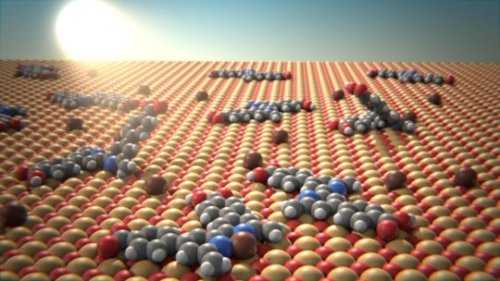#university of basel
Metal leads to the desired configuration
Scientists at the University of Basel have found a way to change the spatial arrangement of bipyridine molecules on a surface. These potential components of dye-sensitized solar cells form complexes with metals and thereby alter their chemical conformation. The results of this interdisciplinary collaboration between chemists and physicists from Basel were recently published in the scientific journal ACS Omega.
Dye-sensitized solar cells have been considered a sustainable alternative to conventional solar cells for many years, even if their energy yield is not yet fully satisfactory. The efficiency can be increased with the use of tandem solar cells, where the dye-sensitized solar cells are stacked on top of each other.
The way in which the dye, which absorbs sunlight, is anchored to the semiconductor plays a crucial role in the effectiveness of these solar cells. However, the anchoring of the dyes on nickel oxide surfaces – which are particularly suitable for tandem dye-sensitized cells – is not yet sufficiently understood.
Post link
A tiny instrument to measure the faintest magnetic fields
Physicists at the University of Basel have developed a minuscule instrument able to detect extremely faint magnetic fields. At the heart of the superconducting quantum interference device are two atomically thin layers of graphene, which the researchers combined with boron nitride. Instruments like this one have applications in areas such as medicine, besides being used to research new materials.
To measure very small magnetic fields, researchers often use superconducting quantum interference devices, or SQUIDs. In medicine, their uses include monitoring brain or heart activity, for example, while in the earth sciences researchers use SQUIDs to characterize the composition of rocks or detect groundwater flows. The devices also have a broad range of uses in other applied fields and basic research.
The team led by Professor Christian Schönenberger of the University of Basel’s Department of Physics and the Swiss Nanoscience Institute has now succeeded in creating one of the smallest SQUIDs ever built. The researchers described their achievement in the scientific journal Nano Letters.

